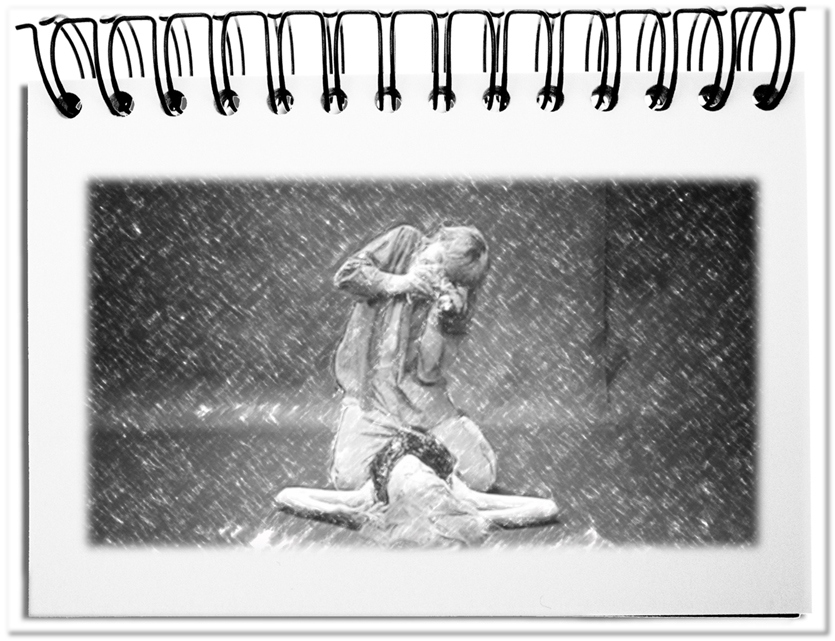What pushes us? What engages the colleagues? These questions arise every day. The look inside oneself provides only limited answers. Let’s take as an example the photographer Thomas in the film Blow-Up. He is pushed by creative drive in the entire film. This artist searches obsessively without interruption the next picture, what makes him to the practical prototype for intrinsic motivation.
Being fascinated by work in order to lose the feeling for the time or the environment requires intrinsic and/or extrinsic motivation. The difference between the two is just the question, where the impulse for the dedication comes from. In the one case out of oneself. In the other case the internal drive is released by external influences. The force that ultimately drives is in oneself.
Intrinsic motivation
Ideally the reason to do something develops in oneself – what I want, when I want, where I want.
- It is on the one hand a matter of intrinsic process motivation. One actually strives for certain activities or actions just for the fun of it. The act is not a means to an end, but it becomes an end in itself. It is already enough reward being able to engage in the matter. The best examples are the many artists, who could live during lifetimes neither from nor without their art.
- On the other hand, inspiration results from the internal self understanding. A certain zest for action is released by the own traits, abilities and values. The feeling of doing the right thing further enforces thereby the internal principles. Just think about the volunteers, who engage themselves socially and experience the positive effects of their doing. Over time, they aim at ever higher standards.
In the film the photographer is a driven guy, who is acting in all photographic areas and shoots one picture after the other. The only one, who pushes him, is he himself. Intrinsic motivation does not need more than consciousness that matches the subject.
Extrinsic motivation
Always if external influences overcome one’s lack of will power, it is extrinsic motivation. The triggers are called for example: You receive something for it! You are the right person! These goals are made for you! You surely want to further develop yourself!
- The formal incentives (instrumental motivation) are used by enterprises and institutions. The desired behavior is stimulated by, for example, payment, promotion, and bonuses. The chances for profit, personal incentives such as spare time, the participation in selected meetings, or the lavishly equipped laptop, satisfy the internal needs and drive the employees to ever greater efforts. The reward releases the increased dedication.
- Externally oriented people are looking for confirmation of their traits, competency and values in their primary reference group. Belonging to a group can already be sufficient, in order to cause extensive readiness to support. This external self understanding leads to the acceptance of certain circumstances and thereafter the striving for status in the group. Signs of the affiliation are certain clothes, the car or smartphones with the famous logo.
- Through goal internalizing people feel motivated to do something, if the trait and behavior of the third party correspond to the own value system. Strong ideals and beliefs are the basis for taking over the reasons of the others. The result is a feeling of strong bindingness to the common goals. This can be seen in the demonstrations of the recent past. Organizations use the angst of citizens, who are confused and frightened by the unknown. The flood of refugees herds them into demonstrations, which actually pursue other goals.
Even if the photographer in the film fulfills different contracts, he does not show external influences. His urge consists of the photographic realization of his ideas. Depending on the situation, he changes spontaneously from one topic to the other.
All the five sources of motivation are present in each person. The degree of the characteristic is different for everyone and that makes the difference. The artist is driven by himself. External influences would disturb his basic concept and his spontaneous inspiration. It would thwart in extreme cases his engagement. For this reason leaders should always be aware with whom they have to do what. The one you should let run and benefit from their results. The others need occasionally an external impact, in order to keep momentum.
Bottom line: The artist is the prototype for intrinsic motivation. They do not need an external trigger for becoming active. They are homing, independent activists, who carry out much more, than they should. The bad news is that they do not always realize exactly what others expect. For this reason the key performance indicators of the extrinsic motivated people are here not valid – attendance time, result contribution, obedience. They are rather the source for additional and new results. External motivations are not enough, in order to make one such addicted to work as in the case of the artist.

